Submitted Review
‘..resonating with the dignity created by strong stories…’
The 36th Telstra NATSIAA
Visiting the 2021 Telstra National Aboriginal and Torres Strait Islander Art Awards (NATSIAA) exhibition in the “flesh” at the Museum and Art Gallery of the Northern Territory (MAGNT) now seems like a minor miracle. Travelling the breadth of Australia from Melbourne to Darwin during the Covid pandemic and avoiding border closures to sneak into the show must be celebrated.
Celebration shimmers from the walls and floors of the MAGNT galleries. Excluding 2020 I have encountered the ‘Telstras’ every year for the past two decades. Upon entering the ground floor gallery (a new space for the NATSIAAs), I was instantly reinvigorated by the power and breadth in variety of the potent individual voices that is the contemporary visual art of First Nation Australians. Well worth the one hour spent crammed into a queue to have our travel permits checked by Northern Territory authorities.
Clearly the excitement these awards have evoked since their establishment in 1984 was not merely a romantic notion that distant memories and the waxing of devotees had created. Indigenous Australian art as witnessed through this yearly survey competition is as potent as any contemporary art being created. The NATSIAAs exhibit multiple mediums from across Australia and this year’s presentation includes very strong works across all fields: painting, bark, works on paper, 3D, and multimedia.
Often prize exhibitions are dissipated by the variety of styles, the clash of scales and visual intensities, making it difficult to focus on individual works. Not so with this year’s NATSIAA finalists. The exhibition breaks precedents. Each work seems to enhance the other works sharing the space. The breadth of visual language reverberates through the changes in imagery, medium and style. I found myself moving from one piece to the next in deep contemplation, changing focus piece-by-piece to engage with the mark-making, textures, surface qualities, narrative, ideas, and suggestions. The overall impact left one resonating with the dignity created by strong stories, and how conviction to storytelling can optimise the expression across all mediums.
Some of the stand-out works for me were Bobby West Tjupurrula’s painting Tingari Men at Palipalintja – a visually explosive capture, it engages with an ancestral story of Tingari ancestors creating Palipalintja (a sacred rock hole site near Jupiter Well, Gibson Desert).
Awarded the general painting award Bugai Whyoulter’s masterful, soft, lyrical painting sings of Salt Lake Country, her ancestral homelands near Kuniwarritji (Pilbara, Canning Stock Route).
Timo Hogan is the winner of the overall award for 2021 with his mysterious evocations of his Salt Lake country at Lake Baker. Timo recently visited and painted on Country, lands his father, the revered Warakurna elder and painter Neville MacArthur, had only just past on the custodianship to him. Visiting for the first time since childhood, the impact of his intense relationship to this country, that IS Timo, emerges through the reduced palette and floats as strong composition above a black ground.
Mary Katatjuku Pan exhibits a suite of six exquisitely detailed ink on paper renditions of animals from her homelands. Experienced in fibre art and wood carving Mary’s paintings are interestingly influenced by these multi-medium explorations.
John Prince Siddon’s painting, true to his unique voice, broaches iconography that creates a visual dialogue between traditional desert patterns, political issues, and current images from around the world that Prince has drawn from mass media. His complex graphic designs challenge us with tensions between the 2-dimensional canvas plane and illusions to the third dimension.
Dhambit Mununggurr’s Bees at Gä?gän acrylic on bark painting won the bark category for 2021. Dhambit offers her signature quirky vision animated with electric blue hues depicting a story told to her by a celebrated elder about bees in an Ironwood tree.
In this hit list I must include the whimsy and fun created in Rona Rubuntja Panangka’s ceramic sculpture Son of the West, a celebration of bush tucker collecting around her homelands Ntaria, and the celebrity of AFL and local Western Bulldogs football players. I am in awe of the way First Nation artists often celebrate the significance of the everyday and manage to integrate it with the eternal.
Using ghost nets salvaged from the Torres Strait, Erub Island artists collaborate to exhibit a large Melomys standing watch while her babies seem frozen in time, captured by the doom of extinction. These creatures reinvented with such a delicate touch by the Erub mob were the only mammals endemic to the reef country and were the first mammals recognised by the Australian government to be classified extinct due to climate change.
Gazing through Erub’s ghost net diorama peers Christian Thompson, a Bidjara man, who lives and works internationally and is represented by one of his signature wall flower photographic floral self-portraits. Embedding himself in amongst a variety of indigenous and non-indigenous flowers that invoke notions of culture, ancestral and colonial history. His cross-hatched painted hands rotate amongst the flowers capturing a continuity of presence and echoes the hand stencilling artists have used in rock art for millennium.
The cross hatching or RARRK work on Christian’s hands lead me back to the stunning stately rarrk patterning that herald Djambawa Marawili’s earth pigments on board work Lorr’, the Lair. Marawili captures a vision of the ancestral lightening snake Mundukul heralding the arrival of a new season by ‘spitting’ lightening arcs across the skies.
Prize shows are built on the model of competition and of course the competition in the ‘Telstras’ is keen, but the overwhelming aura that radiates from this year’s exhibition is the joyful re-charge one receives when you experience a good story expressed with conviction and dignity. The ability for this show to work both as a whole and for the works to be experienced individually with integrity speaks of a true community that is shared by First Nation Australians. If you are fortunate enough to be in Darwin, please lap up this show as the physical experience it truly is, or it is well worth committing to yet another pandemic inspired screen tour via the MAGNT website.
MC
Mark Chapman
Image 1: NATSIAA Installation 2021.
Image 2: Installation featuring Christian Thompson AO.
Image 3: Djambawa Marawili, Lorr’, the Lair (2020).
Image 4: John Prince Siddon, My strange stories (2021), detail.
Image 5: Bugai Whyoulter, Wantili (2020)
Image 6: Installation featuring Rona Rubuntja Panangka, Son of the West (2021) in foreground and Mary Katatjuku Pan, Animal Tjuta – animals of Wattaru (2021) on wall.
Image 7: Timo Hogan, Lake Baker (2020).
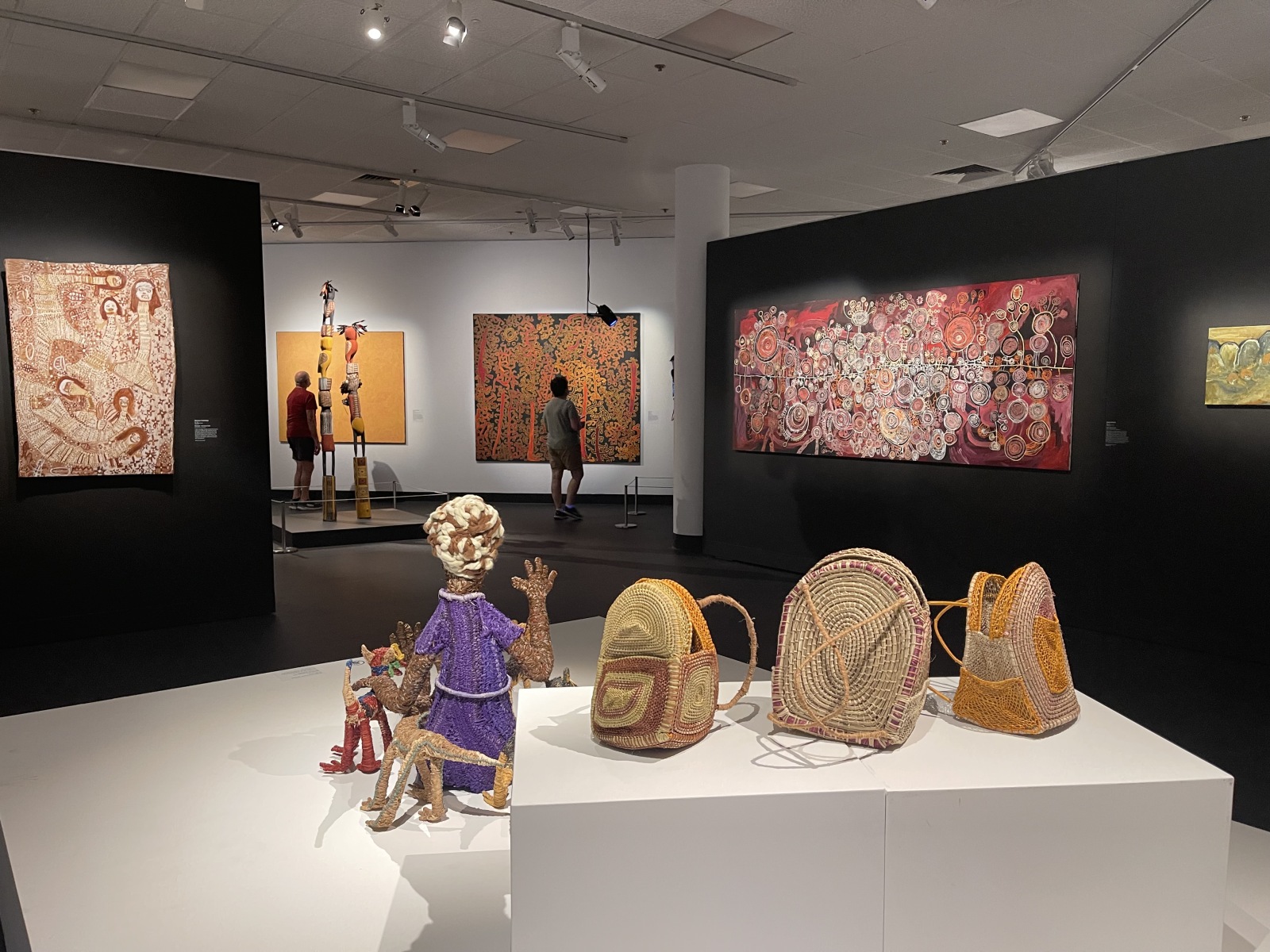
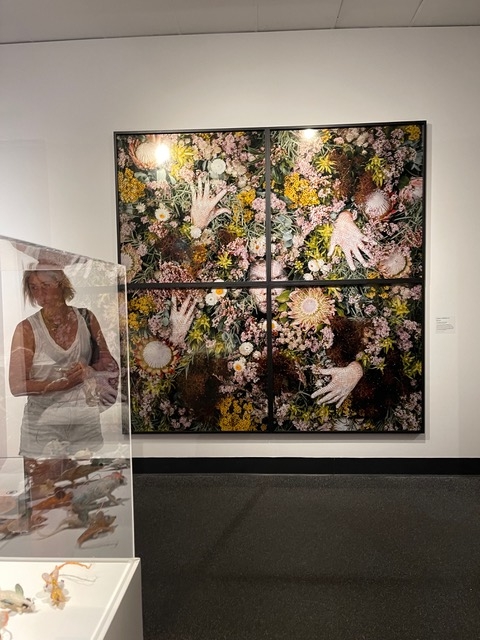
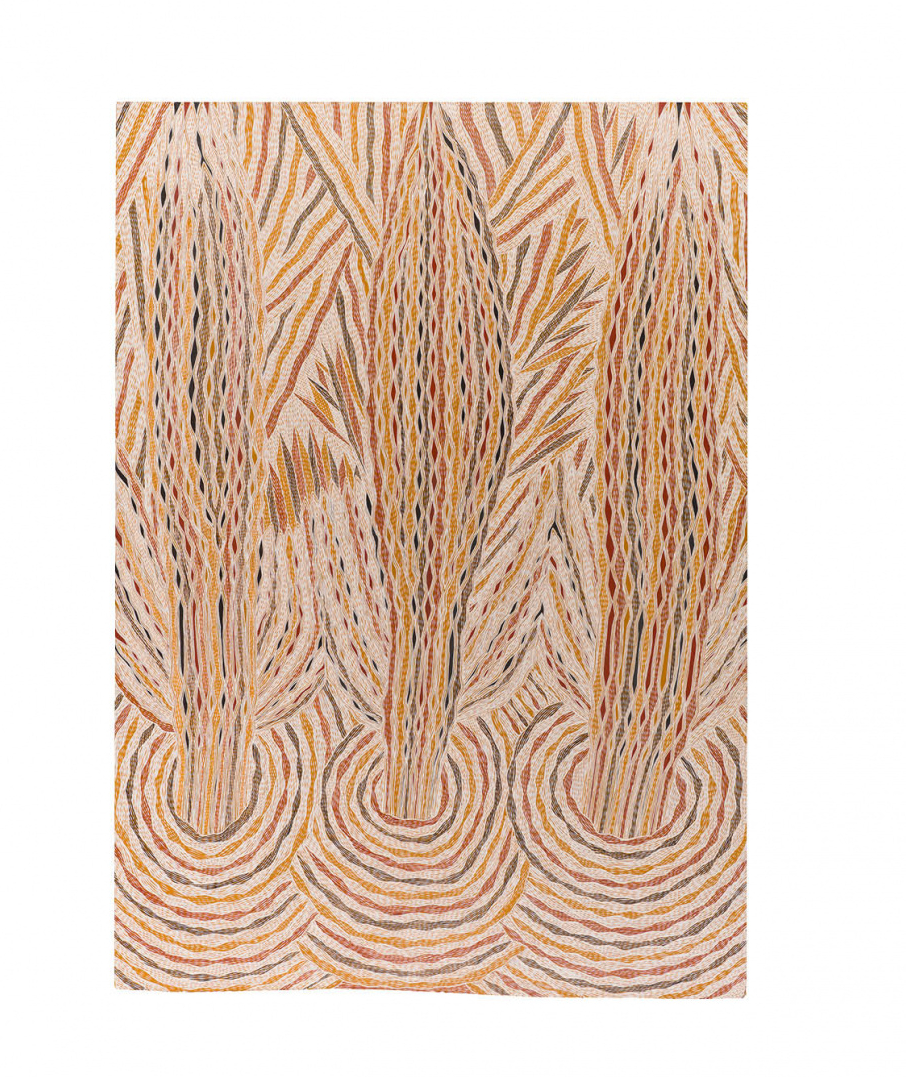
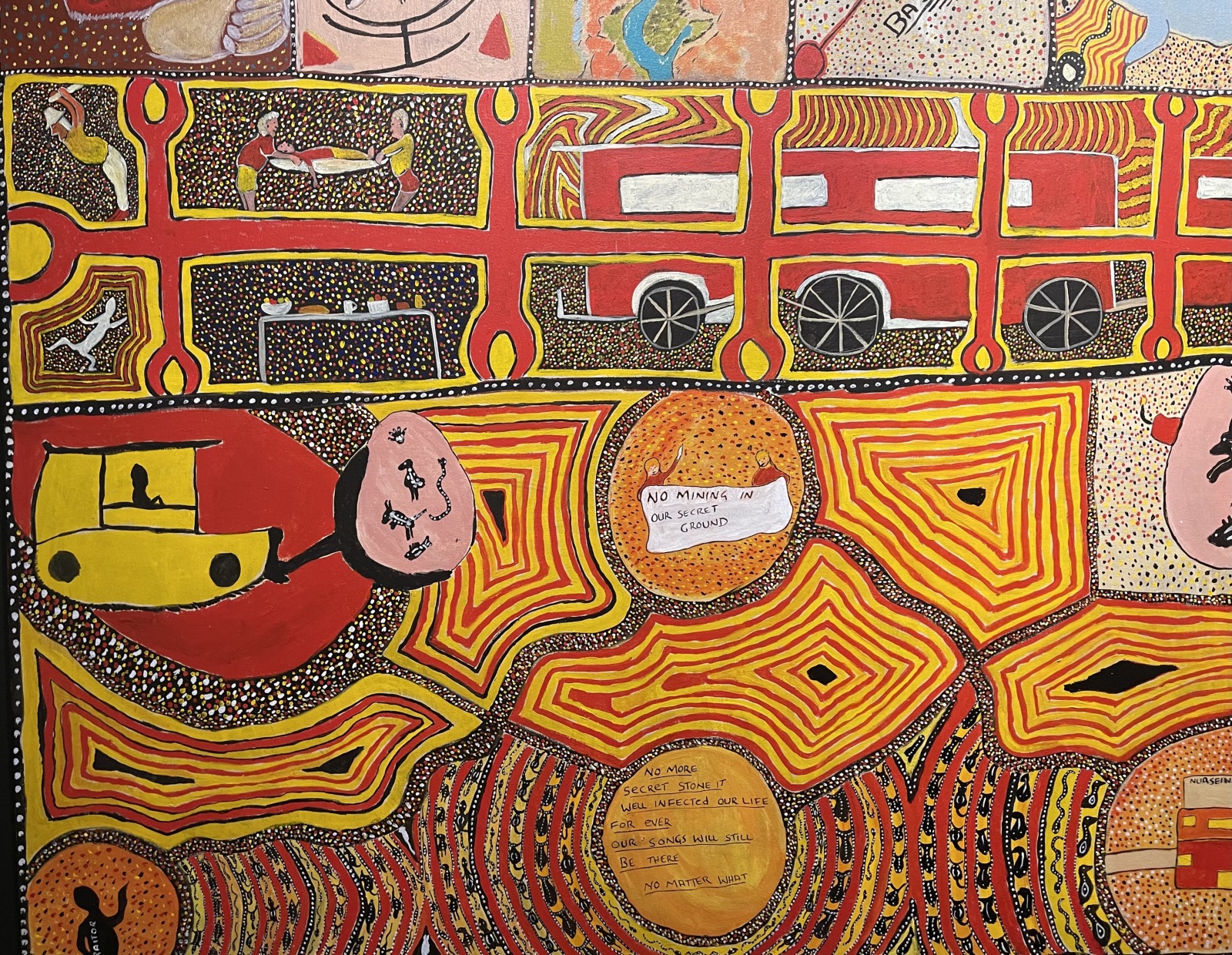
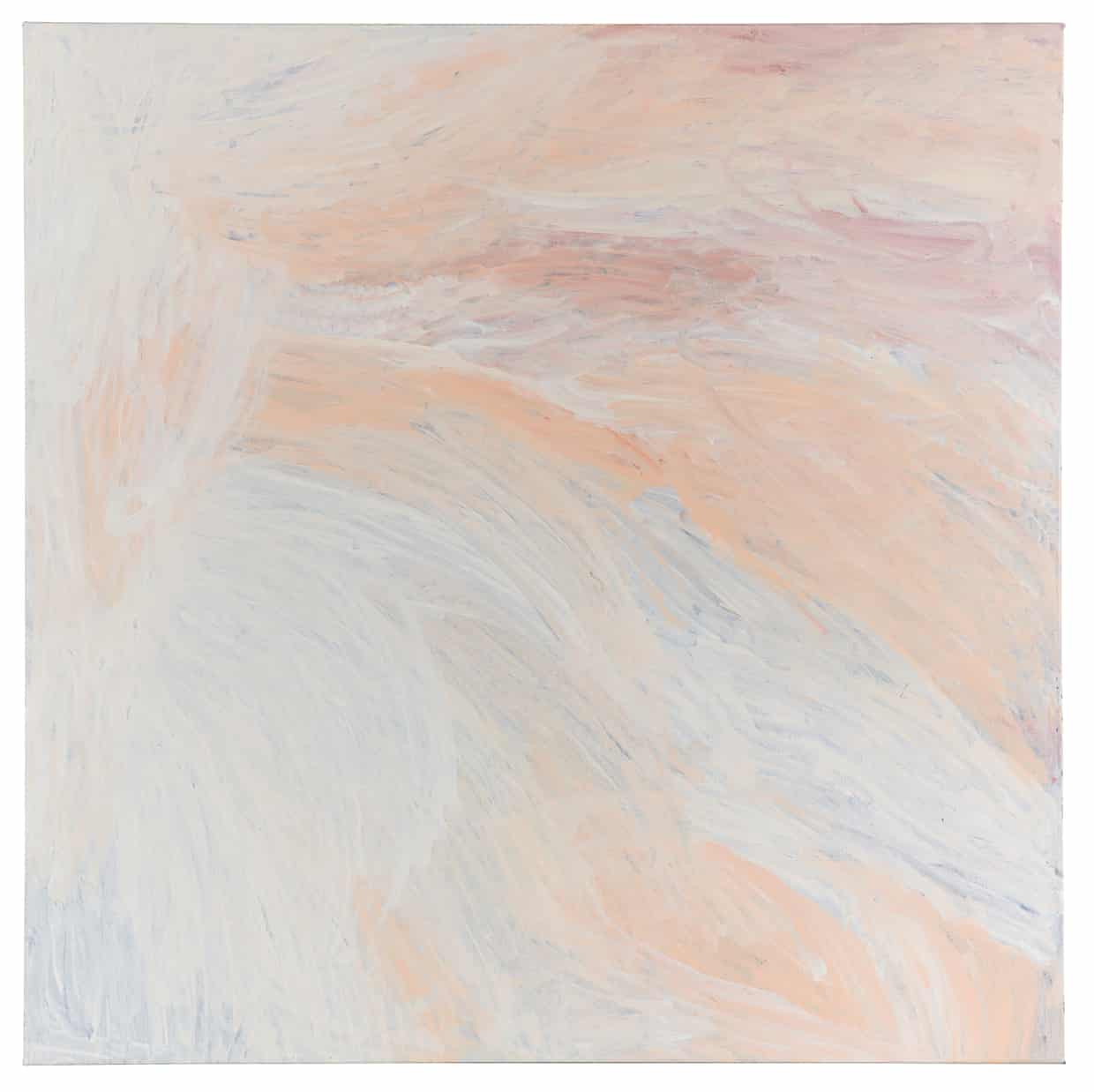
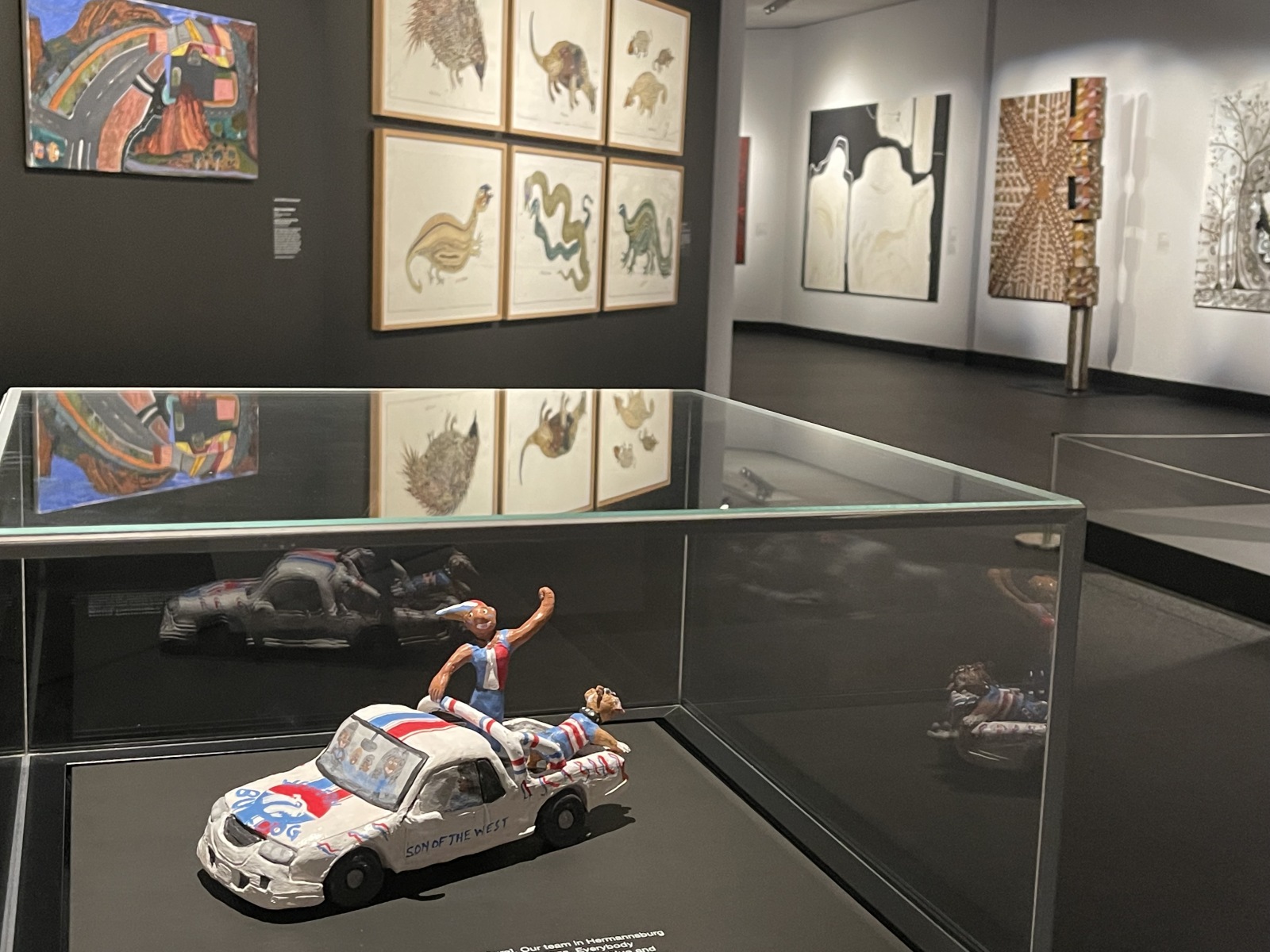
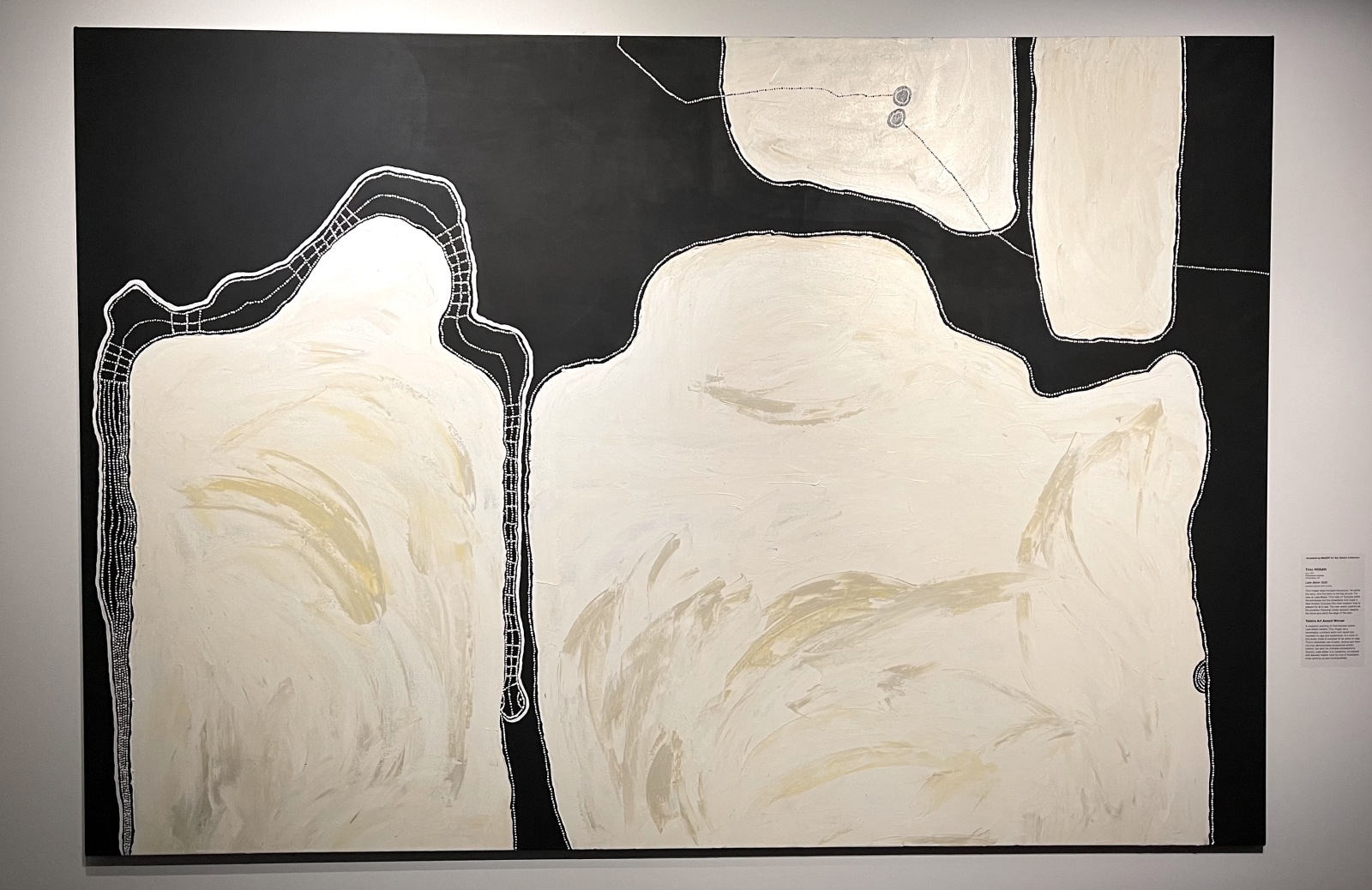
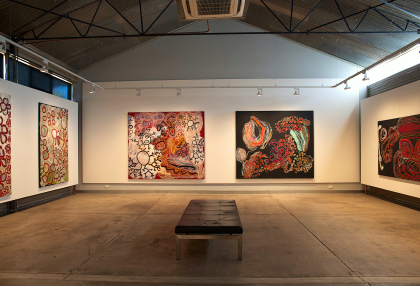
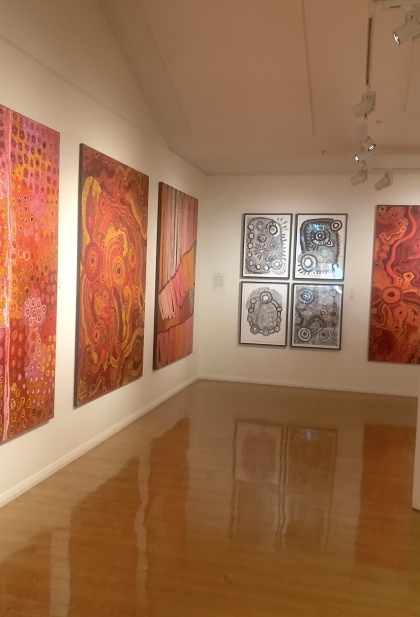
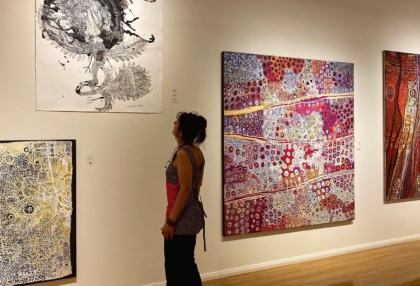
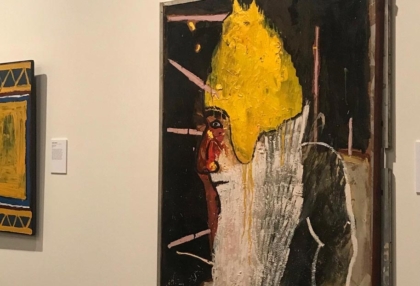
No Comments